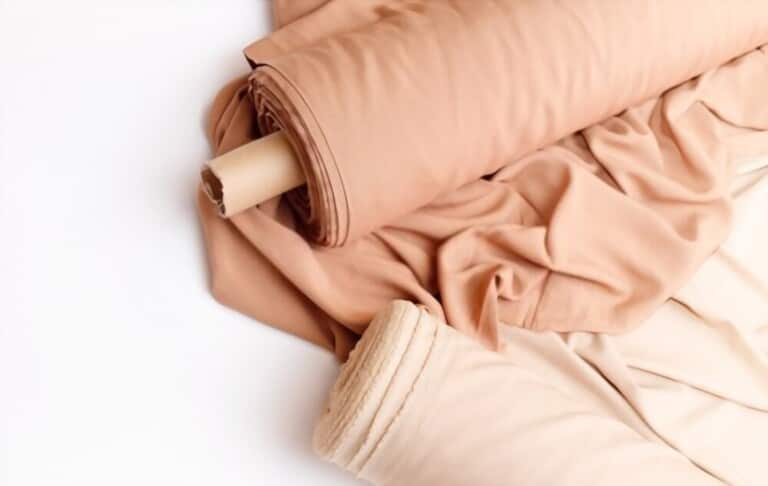Summer is upon us, and what better way to embrace the season than with a breezy summer dress. However, choosing the right fabric can be just as important as the dress design itself. At maake, we have compiled a helpful guide to assist you in selecting the best fabric for your dream summer dress pattern.
A summer dress should be effortless and dreamy, yet still practical and functional. When selecting a fabric for your dress, it is important to consider factors such as drape, weight, and breathability. Our team of experts has developed a definitive guide to ensure that your summer dress is not only stylish but comfortable and functional as well.
When creating your perfect summer dress, keep in mind that fashion is not the only consideration in selecting the right fabric. Function is just as important when it comes to creating a garment that is comfortable and easy to wear. With the help of our expert team, maake’s comprehensive guide will provide you with all the information you need to choose the perfect fabric for your summer sewing pattern - whether you are creating an everyday outfit or a showstopping red carpet dress.
To make the most out of your summer dress, you need a fabric that will provide comfort and breathability. Opting for fabrics that are light and airy will offer a pleasant experience, even during the hot and sunny days. While natural fibers like cotton, wool, and linen are highly favored, some synthetic fibers also work well. In this article, we will take a closer look at the best summer fabrics for frocks that are made of natural fibers.
Natural Fibers for a Cooler Summer
While wool is a fantastic choice for winter garments, it's not the best option for summer frocks. When it comes to the ideal summer fabric for your dress, there are three natural fibers that stand out: cotton, linen, and silk. These fabrics are soft, lightweight, and have excellent moisture-absorbing properties. It is also worth noting that natural fabrics shouldn't weigh more than 100g per square meter (GSM).
Synthetic Fibers That Work Well for Summer
While natural fibers are an excellent choice for summer dresses, some synthetic fibers also work well. Synthetic blends that are lightweight and breathable, like rayon and polyester, are worth considering. These fibers are often combined with natural fibers to create a material that has the best of both worlds.
Choose Your Summer Fabrics Wisely: A Guide to Breathable and Cool Materials
When it comes to summer dressing, it's all about choosing fabrics that are not only stylish but also comfortable in the heat. Here are some points to consider when selecting your summer fabric:
Cotton fabrics vary in weight and can range from semi-sheer to opaque. Choose a lighter weight cotton fabric for maximum breathability.
Linen fabric is ideal for summer dressing. It's absorbent, breathable, and softens with each wash.
Silk fabric is luxurious and has a cool-to-the-touch feel. However, tightly woven silk won't breathe as well as a loosely woven one.
Consider natural blends like rayon and viscose. These fabrics are made from cellulose fibers and are cool and breathable.
Look for loose weaves and fine fibers in your fabric. These offer the most breathable option for summer dressing.
Choose lighter-colored fabrics as they reflect heat and light better than darker ones.
Opt for soft, drapey silhouettes over form-fitting ones. Loose-fitting garments allow air to circulate, keeping you cool and comfortable.
Top Warm Weather Fabrics for Your Summer Wardrobe
If you're wondering which fabrics are best for summer dressing, here's a list of some of the most comfortable and breathable options:
Cotton: Choose a lightweight cotton fabric for maximum breathability.
Linen: Ideal for summer dressing, linen is absorbent, breathable, and softens with each wash.
Silk: Luxurious silk has a cool-to-the-touch feel, but choose a loosely woven silk for maximum breathability.
Rayon: Made from a mix of cellulose fibers and synthetic ones, rayon is cool and breathable.
Viscose: This fabric is made from chemically processed wood pulp and is known for its cool and comfortable feel.
When it comes to summer dressing, make sure to choose fabrics that are both stylish and comfortable. By selecting the right materials, you can stay cool and breezy even on the hottest of days.
The Benefits of Cotton Fabric for Summer Clothing

Types of Cotton Fabric for Summer Dresses
Summer cotton fabric includes various weights, including batiste, denim/chambray, lawn, muslin, cotton poplin, seersucker, and voile. All of these fabrics are perfect for summer dresses as they're 100% cotton and lightweight.
How to Maintain the Look of Cotton Fabric
Cotton fabric is absorbent, easy to wash and maintain, and long-lasting. However, it can crease easily. To keep the fabric looking its best, try using a cotton/polyester mix. Even 100% polyester can work well in summer, but make sure to choose a breathable option like maake's choice for hot weather fabrics.
A Closer Look at Linen Fabric
Linen fabric is a popular choice among many because of its durability and sustainability. Made from flax, linen fabric is stronger and heavier than cotton but more expensive due to the costly process of growing flax. The upside is that flax plants require little water and pesticides to grow, making linen a more eco-friendly option. While linen has a coarser texture and lower thread count than cotton, it's much cooler and dries faster.
The Benefits of Wearing Linen Clothing
Despite its cost, 100% linen is well worth the investment. Linen clothing, such as midi and maxi dresses, is known for its comfort, breathability, and longevity. In addition, linen is hypoallergenic and easy to care for, just like cotton. However, linen does tend to wrinkle easily, although this can be a desirable feature for some designers who incorporate it into their creations. A cotton/linen blend can reduce creasing, and hemp is an excellent option for a breathable and comfortable blend.
Tips for Maintaining and Caring for Linen Clothing
To keep your linen clothing looking its best, avoid tumble drying and instead use steam or an iron to remove wrinkles. Over time, linen fabric softens and creases less, so patience is key. For those who prefer a wrinkle-free appearance, choosing a tightly woven linen or a cotton/linen blend can provide a smoother look.
Silk: A Lightweight and Delicate Fabric Perfect for Summer
Silk, a luxurious and delicate natural fiber, is harvested from cocoons created by silkworms. It is known for its extreme softness and breathability, making it ideal for hot days. Despite common belief that silk is too warm for summer, loosely woven silks that breathe better can create gorgeous, lightweight garments perfect for the season. However, silk does not absorb moisture well and can leave sweat marks, so it is important to choose the right type of silk for warm weather garments.
Rayon: A Breathable and Less Expensive Alternative to Silk
Rayon, a lightweight fabric made from a blend of cotton and natural cellulose, was originally created to resemble silk but comes at a lower cost. Due to its thin fibers, rayon is extremely breathable, cool, and comfortable. However, it requires dry cleaning, or careful hand washing in cold water to prevent shrinking.
Viscose: A Comfortable and Colorful Fabric for Summer Wear

Synthetic and Recycled Polyester Options
One popular synthetic fiber is polyester, which is made from plastic but often blended with other natural fibers for summer-friendly fabrics like frocks. However, with advancements in technology, polyester has evolved to become a material that is cooling, water-resistant, and quick-drying, making it a popular choice for active wear and warm-weather clothing.
For a sustainable alternative to traditional polyester, consider recycled polyester (rPET). Utilizing less water and energy to manufacture, rPET is a more eco-friendly option.
Choosing Breathable Fabrics for Warm Weather
In hot weather, synthetic fabrics like nylon and acrylic can be uncomfortable to wear as they tend to hold heat and not breathe. However, when blended with natural fibers, they can be more comfortable and ideal for warm weather clothing and footwear.
While synthetic fabrics tend to be stronger than natural fibers, opting for more open weaves or knits can allow for better air circulation. Polyester- and nylon-based fabrics are commonly used in activewear, including running jerseys, as they wick away moisture and provide a cooling effect.












